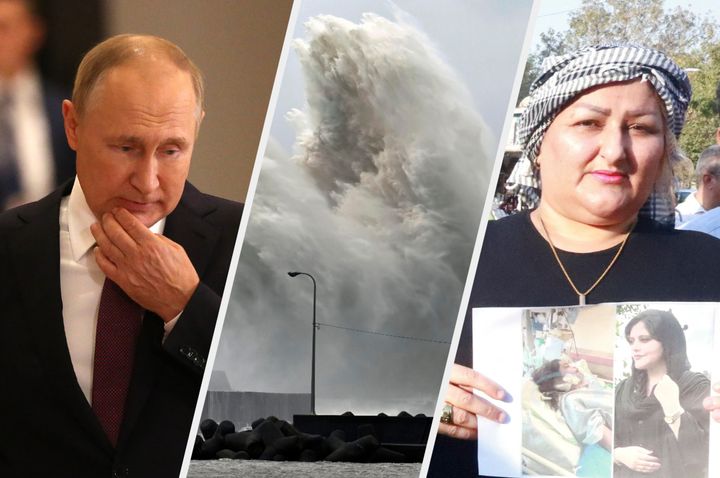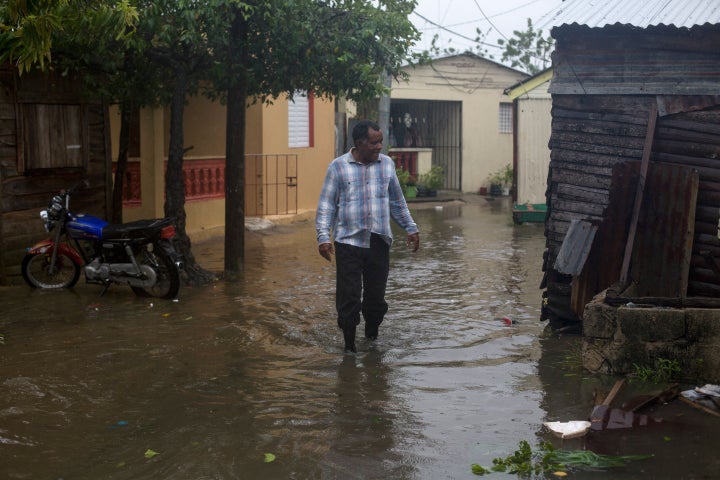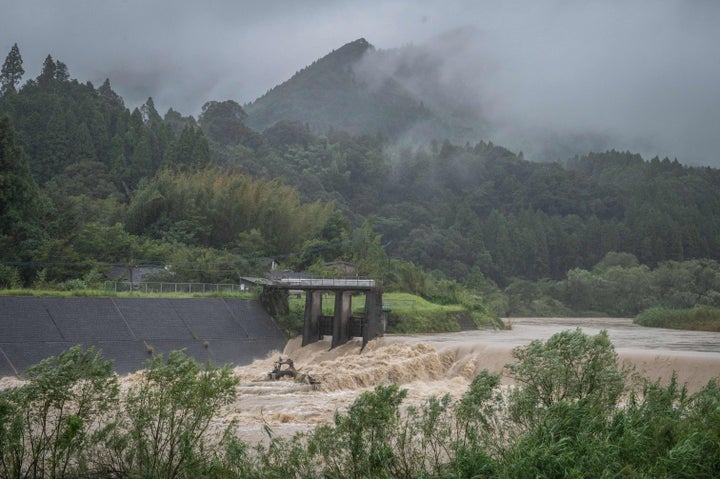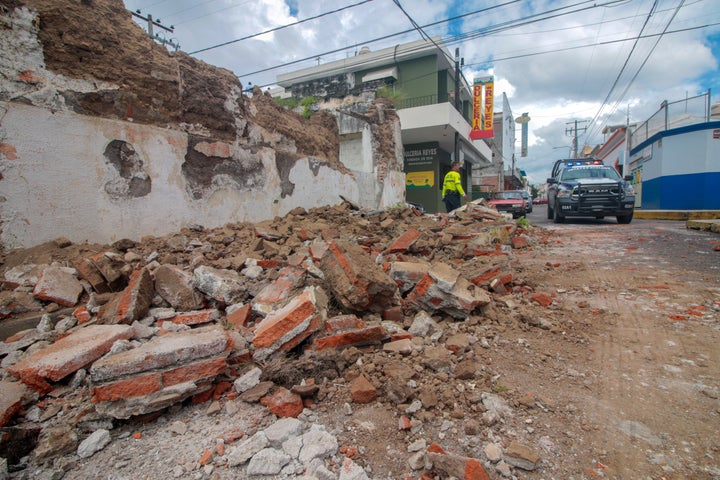
The Queen’s death marked the end of an era for many in the UK, but that didn’t mean life stopped for the world.
While a few stories – such as the death of Chris Kaba, the ongoing cost of living crisis, and Liz Truss’ new cabinet – did get a look-in, the state funeral meant others slipped off the agenda.
So, as the country comes out of this period of national mourning, here’s a list of essential news stories you might have missed altogether over the last 11 days.
1. Community tensions soar in Leicester
Leicester is famous for its multicultural population, but a spate of clashes in recent weeks has shaken the city to its core.
Violence first broke out after the India vs Pakistan cricket match a month ago, on Sunday, August 28, and more scuffles followed in the next few weeks.
But, locals claim that the tensions began rising long before the match, with members of both the local Hindu and Muslim communities allegedly squaring up against one another, although the exact cause is still unclear.
The tensions seemed to come to a head on the night of September 17, when around 200 people – mainly masked or hooded men – gathered for an unauthorised protests in the east of the city.
All local officers available were called to the scene, and a stand-off followed, with police having to separate rival groups as they threw bottles at one another.
Police officers were even diverted from the Queen’s funeral in London to provide back up to the force in Leicestershire. They made 47 arrests in total and 16 officers were injured in the violence on Saturday night alone.
Claudia Webb, independent MP for Leicester East, said tensions had been simmering for “months”, and has previously claimed that some social media accounts were “preying on this unease” by “spreading misinformation”.
In a Twitter post, she wrote: “There are reports of incitement to hate being targeted at those of Muslim and Hindu faith, which is being shared on social media to cause fear.
“Places like Facebook and via WhatsApp designed to ‘entrap’ members of the local community to attend a protest, sparked by hate.”
She claimed such posts were “designed to provoke additional clashes and to cause disharmony and distrust”.
Mayor of Leicester Sir Peter Soulsby has said these recent events have left him “baffled”, while Labour MP for Leicester South, Jonathan Ashworth, said the troubles were a “dark episode” where he and residents “rightly pride ourselves on celebrating our diversity”.
Extremists, territorial rivalries and the influence of people from outside the city have all been blamed for supposedly inciting violence.
Webb also warned on Tuesday that the violence could spread beyond Leicester without central government intervention.
The Hindu and Muslim communities in Leicester released a joint statement two days after the violence at the weekend, saying: “We are from one family. We settled here in this city together, we fought the racists together, we build it up together. The recent violence is not who we are as a city.”
The Indian government has also released a statement, strongly condemning the violence.
“We have strongly taken up this matter with the UK authorities and have sought immediate action against those involved in these attacks.”
2. Mahsa Amini’s death
Protests have broken out across Iran’s capital Tehran, following the death of Mahsa Amini, a 22-year-old woman, last Friday.
She had been in a coma for three days after “morality” police held her for supposedly breaking hijab rules. She was detained outside a Tehran metro station, as part of the police’s clampdown on clothing.
Witnesses said officers beat her inside a police van which later took her to a detention centre, although police brigadier-general Hossein Rahimi dismissed such claims as “cowardly accusations”.
Police also claimed that Amini had suffered from “sudden heart failure” while at the detention centre where she was to be “educated” with other women.
The authorities later released footage showing a woman they claim is Amini talking to a female official, who had tried to reach for her clothing. Amini then holds her head with her hands and falls to the floor.
The police, who described her death as “unfortunate”, said that Amini had “previous physical problems”, but her father denied such a claim, and claimed the CCTV footage is edited.
In protest to Amini’s death and the strict regime of Iran, women have since been seen removing their headscarves and cutting their hair while shouting “death to the dictator”, in what is believed to be a reference to the country’s supreme leader, Ayatollah Ali Khamenei.
Demonstrations in Tehran and western Iran over the weekend reportedly led to the death of two people during a clash with riot police.
Protests in Saqez, a western part of Iran, led security forces to allegedly open fire on a crowd as they tried to move towards the local governor’s office.
Further demonstrators took place in Kurdistan’s capita, Sanandaj. Amini was an ethnic Kurd from Saqez.
3. Hurricane Fiona
A devastating storm, Hurricane Fiona, has swept across parts of the Caribbean in recent weeks – and it doesn’t look like it’s going to slow down any time soon.
Residents on the Turks and Caicos Islands were urged to seek shelter on Tuesday, after Fiona had already wrecked havoc in Puerto Rico and the Dominican Republic. The hurricane is expected to reach the southern Bahamas too, and the eastern Bahamas by Wednesday.
In Puerto Rico, the storm killed at least three people and caused significant flooding with more than 75cm of rain falling.
It also caused a total blackout which isn’t expected to be fixed any time soon, especially as the territory is still struggling with its power grid after the brutal category 5 storm, Hurricane Maria, which knocked out 80% of power lines in 2017.
The weather in the US territory was still chaotic on Monday, with frequent lightning and rain. Torrential rain and wind then hit the Dominican Republic too, and it now seems to be building up in power.
The category 2 storm is expected to become a category 3 with winds beyond 111mph, which will make it the first “major hurricane” of the 2022 season, according to the National Hurricane Centre. By the time it reaches the eastern Bahamas, it could be category 4.

4. Typhoon Nanmadol
At least two people were killed as record winds and rain hit the west of Japan on Monday.
Prime minister Fumio Kishida even delayed his flight to New York for the UN General Assembly so that he could look at the damage of the 14th typhoon Japan has faced this season.
There was major landfall near Kagoshima city on Sunday, before it hit the islands of Kyusha and Honshu, while rivers overflowed and roofs were ripped off by the strong wind.
“We need to remain highly vigilant for heavy rains, gales, high waves and storm surges,” a Japanese Meteorological Agency official said, according to Reuters news agency. At least 115 people have been reported injured and around 340,000 households lost power.

5. Putin moves submarines away from Crimea – but nuclear fears continue
Russian president Vladimir Putin has allegedly moved the country’s submarines away from the annexed peninsula Crimea.
As Crimea was seized by Russia in 2014 (and seen by some as the start of Russia’s war against Ukraine), it was thought to be secured under Moscow’s rule.
But, as the UK’s defence ministry tweeted on Tuesday, Russia’s Black Sea Fleet “has almost certainly relocated” its submarines from Crimea to southern Russia.
The officials explained: “This is highly likely due to the recent change in the local security threat level in the face of increased Ukrainian long-range strike capability. In the last two months, the fleet headquarters and its main naval aviation airfield have been attacked.
“Guaranteeing the Black Sea Fleet’s Crimea basing was likely one of Russian president Vladimir Putin’s motivations for annexing the peninsula in 2014. Base security has now been directly undermined by Russia’s continued aggression against Ukraine.”
It comes after Ukraine’s highly successful counteroffensive which has reclaimed large swathes of land from Russia in the north-east.
“The occupiers are clearly in a panic,” Ukrainian president Volodymyr Zelenskyy claimed on Monday.
Russia has also sparked fears of a nuclear war once again, after a missile exploded less than 900 feet from reactors of the South Ukraine Nuclear Power Plant, the second largest nuclear plant in the country.
This is separate to the worries around the Zaporizhzhia power plant, which sits on the frontline of the fight between Ukraine and Russia.
The South Ukraine plant is far from the frontline, but the attack demonstrates the extent of Russia’s reach (if it did indeed come from Moscow).
Still, there was no damage to safety equipment, and the exact source of the explosion could not be independently confirmed.
6. Mexico earthquakes
On the anniversary of two other significant earthquakes, dating back to 1985 and 2017, Mexico was hit by yet another earthquake which killed at least two people.
The National Autonomous University of Mexico said there is no scientific explanation for why all three quakes would happen on the same day.
A 7.6 magnitude hit western Mexico on Monday, knocking out power and leaving people in Mexico City desperately seeking safety.
Hospitals were damaged, and other buildings collapsed onto the people within.
The US Pacific Tsunami Warning Centre also issued a warning for coastal areas, saying waves reaching up to three metres above the tide level were possible.
The September 19, 1985 earthquake killed thousands, and more than 350 died in September 19, 2017.

